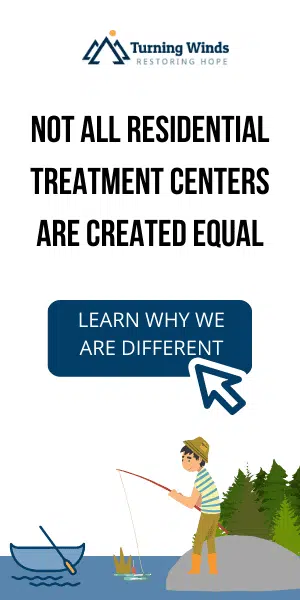Updated on July 20, 2023
Life-Changing Interventions for Troubled Teens and Their Families: Breaking the Cycle!
Information for Parents on teenage intervention program options. In this article, we want to help you understand the crucial role of interventions in helping troubled teens and their families find healing. When you finish reading we’d like to have answers to these important questions.
- When should a parent take the drastic step of carrying out an intervention on an out-of-control child?
- What happens during and after an intervention on a troubled youth?
- Do I need proper professional help to intervene between me and my teen?
“My Teen Needs an Intervention! We need help!”
Finding Hope for Travis: An Intervention for ODD
Diagnosed with oppositional defiant disorder at the age of 13, Travis turned 16 while housed in a juvenile detention center. At their wit’s end, Travis’ parents requested police remove him from their home after Travis threatened to harm them. But Julie and Ted know that sitting in jail is not going to help Travis’ severe behavioral disorder.
When Travis entered 7th grade, he seemed to be a typical young teenage boy–sports, video games, riding bikes with friends. Then his parents noticed a disturbing change in his behavior when he started hanging out with an older teenager who moved in next door after Christmas.
“Travis would spend hours with Jesse on the weekends,” Julie told Travis’ counselor. “He would tell me he and Jesse were just going to hang out, play video games or whatever. Jesse seemed really shy and socially awkward but nothing out of the ordinary for a teenager”.
Within weeks of becoming friends with Jesse, Travis began talking back to his parents, neglecting chores he was supposed to do and locking his bedroom door at night. Ted threatened to ground Travis if he didn’t “shape up,” but Travis ignored his father.
Instead, he spent even more time with Jesse after school and on the weekends. The last straw was when Travis’ parents received a call from the school principal.
Travis had been skipping school, not turning in homework and was in danger of failing his spring semester classes.
Furious with Travis, Ted told Travis he was grounded for a month and could not hang out with Jesse anymore. Ted and Julie also made an appointment with a psychologist specializing in adolescent behavior.
“I think your son has oppositional defiant disorder,” the psychologist said. “But I think we can help him with weekly counseling and medications to stabilize his mood.”
Although Ted and Julie felt relieved about Travis’ future after talking to the psychologist, it proved to be a short-lived relief.
Recognizing the Signs: When to Consider an Intervention for Your Troubled Teen

On the night Travis threatened his parents with bodily harm, he had come home drunk and reeking of marijuana.
“You can’t make me go to one of those places,” Travis said. “Jesse’s planning on running away. I’ll just go with him.”
Ted told Julie to call the police. “I’m done.” Ted said. “I can’t deal with this anymore.”
When Travis realized his father was serious about sending him away to a residential treatment program for troubled teens, he became enraged.
Grabbing a heavy lamp off an end table, Travis threatened to hit his mother with it. Julie fled to the kitchen as Ted stepped in front of Travis. At that point, the police arrived, handcuffed Travis, and booked him into a juvenile detention center.
Ted and Julie called Travis’s psychologist the next morning. He immediately gave them the number of a crisis intervention specialist. “Call her”, he said. “Your son needs more than medication and counseling”.
“I’ve had it, Travis”, Ted yelled. “We’ve done everything we can to help you. You just don’t get it, do you? Well, maybe a few months at a boot camp will straighten you up!”
Find out whether your child's behavior indicates they need an intervention. Take the Behavioral Assessment for Troubled Teens
What Parents Need to Know: Understanding the Intervention Process for Troubled Teens
A crisis intervention for troubled youth is often the last resort for parents who have used all other resources. The goal of an intervention is to safely and securely transport a teen to a residential treatment center, a wilderness program for troubled teens or therapeutic boarding school.
Individuals who run teen intervention programs are trained in various crisis counseling techniques that can quickly defuse volatile situations arising before, during and after the intervention.
Depending on the circumstances, intervention transport specialists may decide it is best to come in the middle of the night to catch a wayward teen too groggy and surprised to resist. However, parents always have the final say when implementing an intervention for their child.
If Travis had been transported by an intervention team to a wilderness camp or residential treatment center, here is what would have happened:
Before the intervention
Ted, Julie and the transport service specialists developed a plan that provided options for potential issues. For example, if Travis had become aggressive, his parents had agreed to allow the staff to use restraints only to prevent Travis from injuring himself or others.
Once the intervention team arrived
Ted and Julie told them where Travis was, how he had acted earlier in the day and a general idea of their home’s layout (back doors through which Travis might try to escape, etc). They also gave the team a suitcase packed with Travis’ clothes and a few personal items.
Ted and Julie then went into Travis’ room, woke him up, introduced him to the intervention team and quickly left the room. Leaving the room eliminates the possibility of Travis verbally abusing them or trying to manipulate them into calling off the intervention.
Crisis intervention counselors with the team will inform Travis what is going to happen and that they are in charge of the situation. As the team is escorting Travis to the transportation vehicle, they will explain what behaviors are acceptable and unacceptable and that they expect him to cooperate during the journey.
During the transport
Intervention staff begins preparing Travis for entry into a treatment program. Minimizing his anxiety and anger by answering questions calmly, engaging in crisis counseling strategies and encouraging Travis to at least give the program a chance are things they will be discussing with Travis along the way.
Upon arrival at the Residential Treatment Center
Once Travis has arrived at the residential treatment center or therapeutic school, his parents will be informed he has arrived at his destination, how well he accepted the intervention and when they will be contacted in the future.
Exploring Effective Intervention Models for Troubled Youth
Johnson Model
Although commonly used to treat substance abusers, the Johnson Intervention Model may be applied to older teens with long-term and severe ODD, conduct disorder or combination of substance abuse and behavioral disorder. Developed in the 1980s, the Johnson Model asserts that allowing someone to hit “rock bottom” (whether a substance abuser or at-risk youth) before intervening is counterintuitive and detrimental to the recovery of that person.
In other words, the Johnson Model theory of intervention contends that preventing an individual from further destroying their life as soon as possible is more viable than allowing them to endure repeated incarceration, homelessness or progressive mental health issues.
The Johnson Model involves teens and their parents attending therapy sessions together to express deep-seated emotions and suppressed thoughts about the teen’s past behavior. Parents are encouraged to tell their child how much turmoil and pain the child has caused in their lives and the lives of others who the teen may have hurt emotionally or physically.
Teens are also encouraged to express their feelings about their parents and what they think about the intervention process. In addition, parents should inform their teen of potential consequences once they have completed the program but return to their old behaviors once at home.
These consequences may include not getting their driver’s license or being prohibited from owning a car. Since the Johnson Model is more confrontational than other intervention models, it is usually reserved for teens between 15 and 18 years old.
Behavior Modification Model
Many teenage intervention programs employ the behavior modification model to help troubled youth replace negative behaviors with more productive behaviors. Behavior modification programs use cognitive behavioral therapy (CBT), motivational interviewing therapy, positive/negative reinforcement, active listening and other evidence-based techniques.
Most at-risk youth have never been forced to acknowledge and analyze their negative behaviors before an intervention. When troubled teens are away from parents and friends who may have inadvertently enabled them, teens don’t have a family member saying “it’s just a phase” or a peer telling them it’s “cool” to steal something valuable because a store owner “has a lot of money, anyway. They won’t miss it”.
By putting space between troubled youth and parents, peers and enablers, an intervention can help reinforce the success of behavior modification techniques. Behavioral therapies also benefit teens with:
- Depression
- Anxiety
- Anger management issues
- PTSD
- Bipolar disorder
- ADHD
- Eating disorders
- Obsessive-compulsive disorder
- Substance abuse
The Vital Role of the Family in Teenage Intervention Programs
When parents request an intervention for a troubled teen, they have typically exhausted all other resources available. Parents may also feel that their teen is at risk of harming themselves, at risk for potentially harming family members or do not want their teen trapped in the “school to prison pipeline“.
The success of an intervention for teens depends predominantly on two things: the professional strength of a treatment program and the committed involvement of the family.
One of the roles of a family in helping a troubled teen is to support and encourage them to seek professional help. Learn in this article how to talk to your teen about getting treatment.
In some cases of troubled youths, certain family members may be enablers who have excused the teen’s behavior out of misguided love for the child. Enablers are grandparents, aunts, uncles and other family members who give teens money for drugs or alcohol, drive them to wherever they want to go and continue saying “oh, he or she will outgrow it. It’s just growing pains”.
If the intervention team recognizes an enabler in the family, they will also receive special counseling during and after the intervention.
How Does a Parent Know It’s Time to Set Up an Intervention for Troubled Teen?
In Ted and Julie’s case, they waited until Travis threatened to physically harm them. Several years of counseling and medication did not help Travis. Nor did it help that the older teen who may have been partially responsible for Travis’ behavior had neglectful parents.
What if Ted and Julie has simply gone to their bedroom that night and allowed Travis to get away with disruptive behavior again? No doubt they both probably thought about that, but something was different about this confrontation. Travis had never threatened to hurt either of his parents before. He had verbally abused them, yelled at them, and called them names in the past but never menaced them violently. It was the “wake-up” call Ted and Julie needed to push them to make the decision to stage an intervention.

Deciding to set up an intervention for their teen will be one of the hardest decisions a parent may make regarding the health and well-being of their child. It can also be the best decision a parent can make when they have exhausted all other options.
Benefits of Teenage Intervention Programs for Troubled Teens
Teenage intervention programs offer many benefits that can have a lasting impact on your child’s live. These programs focus on academic restoration, emotional and behavioral transformation, as well as family involvement and support.
- Giving the child a new opportunity for academic success and restoration. RTCs and TBS offer targeted support and resources to help struggling teenagers catch up with their studies through tutoring, specialized classes, or individualized learning plans. The goal is to ensure that students have the necessary tools to succeed academically.
- The beginning of an emotional and behavioral transformation. Teens that require intervention usually face peer pressure, stress, or mental health issues. An intervention program like a residential treatment facility provides a safe and supportive environment where they can learn coping mechanisms, develop self-awareness, and build resilience. By addressing underlying emotional and behavioral issues early on, helping them to make positive changes in their lives.
- Family involvement and support are crucial components of teenage intervention programs. A good program will involve families in the intervention process through counseling sessions or workshops. These programs foster open communication channels and create an environment where parents and, eventually, siblings can actively participate.
By providing targeted support for academic restoration, facilitating emotional and behavioral transformation, as well as encouraging family involvement and support networks, these interventions play a vital role in shaping positive futures for young individuals.
Is Your Child in Need of An Intervention?
When everything you try fails, the answer is likely an intervention and a therapeutic residential treatment facility.
If you are not sure and would like help or more information. Please Click the Button below to speak to a family advocate and learn more about residential treatment and intervention options.
Yes, I want to speak to speak to a family advocateThe Difference Between Enabling Our Children and Helping Them (Infographic)
![Effective Intervention Options for Troubled Teens 4 [Inforgraphic] Enabling vs. Helping Troubled Teens](https://troubledteens.com/wp-content/uploads/2021/02/TT-Enabling-v-Helping-optimized-410x1024.jpg.webp)




















